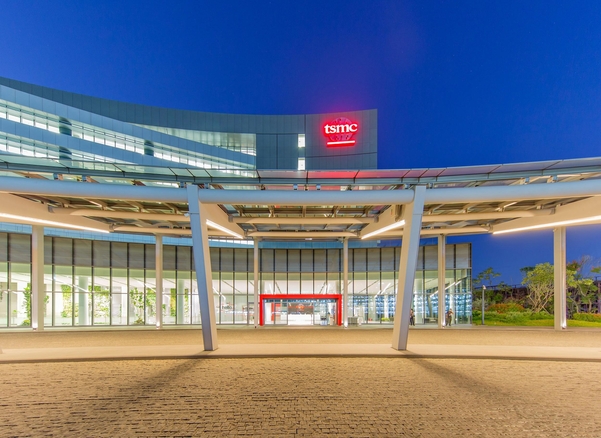Input 2021.01.08 06:00
1st place TSMC 54%, 2nd place Samsung Electronics 18% forecast
10nm or less, TSMC 60%, Samsung Electronics 40% each
Next year’s mass production target 3nm competition seems to go towards the market
Samsung Electronics is pursuing Taiwan’s TSMC, an absolute powerhouse in semiconductor foundry (consignment production of semiconductors) by declaring that it will achieve the number one system semiconductor by 2030. Samsung Electronics is the world’s No. 1 in the memory semiconductor market, but in the foundry market, it is second with a wide gap from TSMC.

According to the market research firm Trend Force on the 8th, the size of the foundry market this year is expected to grow by about 6% compared to the previous year to $ 87.8 billion (about 95.55 trillion won). This is because the demand for semiconductors for smartphones, TVs, PCs, and servers has increased as the non-face-to-face technology has attracted attention due to the new coronavirus infection (Corona 19), and the proportion of semiconductors employed in the automotive industry has also increased.
Taiwan TSMC is expected to occupy 54% of the foundry market this year, and it is believed that it will remain the No. 1 market. Second place is Samsung Electronics, which is expected to increase by 1 percentage point from 17% last year to 18%. It is observed that the gap between the two companies is still more than 30 percentage points.
However, TSMC and Samsung Electronics are expected to compete in the microprocessing market with circuit line widths of 10 nm or less. Only TSMC and Samsung Electronics in the world can perform microprocessing of 10 nm or less, but Transforce predicted the market share of the two companies at 60% and 40%, respectively. China’s SMIC, which was threatening the two, has somewhat shaken its competitiveness due to US sanctions.
The industry cites the difference in the share of the entire foundry and the microprocessor as a reason for Samsung Electronics’ microprocessing competitiveness. It is competing on a level with TSMC in the process of 7 nm or less. In the semiconductor process, the narrower the circuit line width, the more highly efficient, low power, and ultra-small semiconductors are made.
TSMC and Samsung Electronics are also confronting the 5nm process. For TSMC, Apple, AMD, and MediaTek are considered as major customers, and Samsung Electronics is also receiving orders for its own mobile AP (app processor) Exynos, Qualcomm, and Nvidia. Microprocessing foundries, including high-performance computing (HPC) related semiconductors in 2022, are literally lined up by semiconductor design companies.

TSMC and Samsung Electronics side by side declared mass production of the 3nm process in 2022, but the technology direction is somewhat different. Samsung Electronics applies GAA (Gate All Around) technology to the 3nm process, and TSMC maintains the FinFET used in the existing process.
Transistors constituting a semiconductor are divided into a’channel’ through which current flows and a’gate’ that controls the channel. GAA is a structure in which the gate surrounds the four sides of the channel. This maximizes the ability to tune the channel, such as finer control of the current flow. However, the process is more complex and elaborate than the finpet structure, so that the problem of yield (the ratio of good products to the total product) needs to be solved.
Finpet is known as a somewhat disadvantageous technology in ultra-fine processes as the gate and the channel are in contact on three sides. TSMC is expected to introduce GAA like Samsung’s from the 2nm process.
For this reason, the industry predicts that the success or failure of the 3nm process will determine the direction of the foundry industry in the future. SK Securities researcher Kim Young-woo said, “Samsung will have a technological advantage over TSMC from 3nm with GAA.” If Samsung Electronics’ 3nm GAA process is successfully evaluated, it is predicted that the foundry market will change in 2023.
Young-san Choi, a researcher at EBEST Investment & Securities, said, “Samsung Electronics’ share of the foundry is never low, and it is very difficult for other foundry companies to enter the process below 10nm. In view of this, the entire foundry of Samsung Electronics is It is believed that the market share can be sufficiently increased to the level of 30-40%.”
